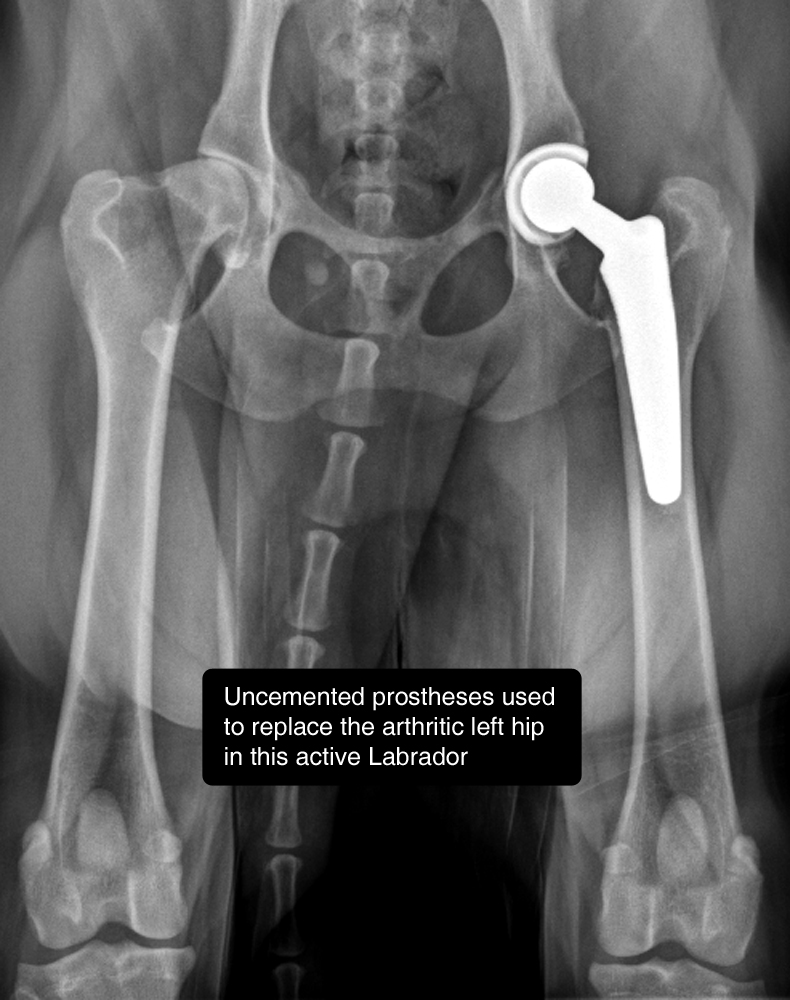Canine Hip Dysplasia Resolved with Total Hip Replacement

Canine hip dysplasia is a severe, inherited joint disease of dogs that reveals itself in a progressive lameness associated with arthritis and looseness of both hip joints that make running, walking, and even standing difficult. The disease is most common among large breed dogs such as German Shepherds, Labrador Retrievers, Golden Retrievers, St. Bernards, and Newfoundlands.
Signs of hip dyplasia can develop as early as six months to two years of agewith pain the most common indicator. Affected dogs may have difficulty getting up, standing, or walking up stairs and attempts to manipulate the hips may cause pain.
Canine Hip Dysplasia is diagnosed by X-ray examination with treatment determined for each animal on an individual basis. Medical treatment can ease the pain in most cases and surgical treatment may be necessary to relieve pain in severely affected dogs.
The clinicians in the Orthopedic Service at NC State University’s Randall B. Terry, Jr. Companion Animal Veterinary Medical Center can replace a painful or damaged hip joint with an artificial one. The prosthesis eliminates the cause of pain and stiffness, and the patient can return to most normal activities.
[section_subtitle] For more information: [/section_subtitle]
Orthopedics, Total Hip Replacement


